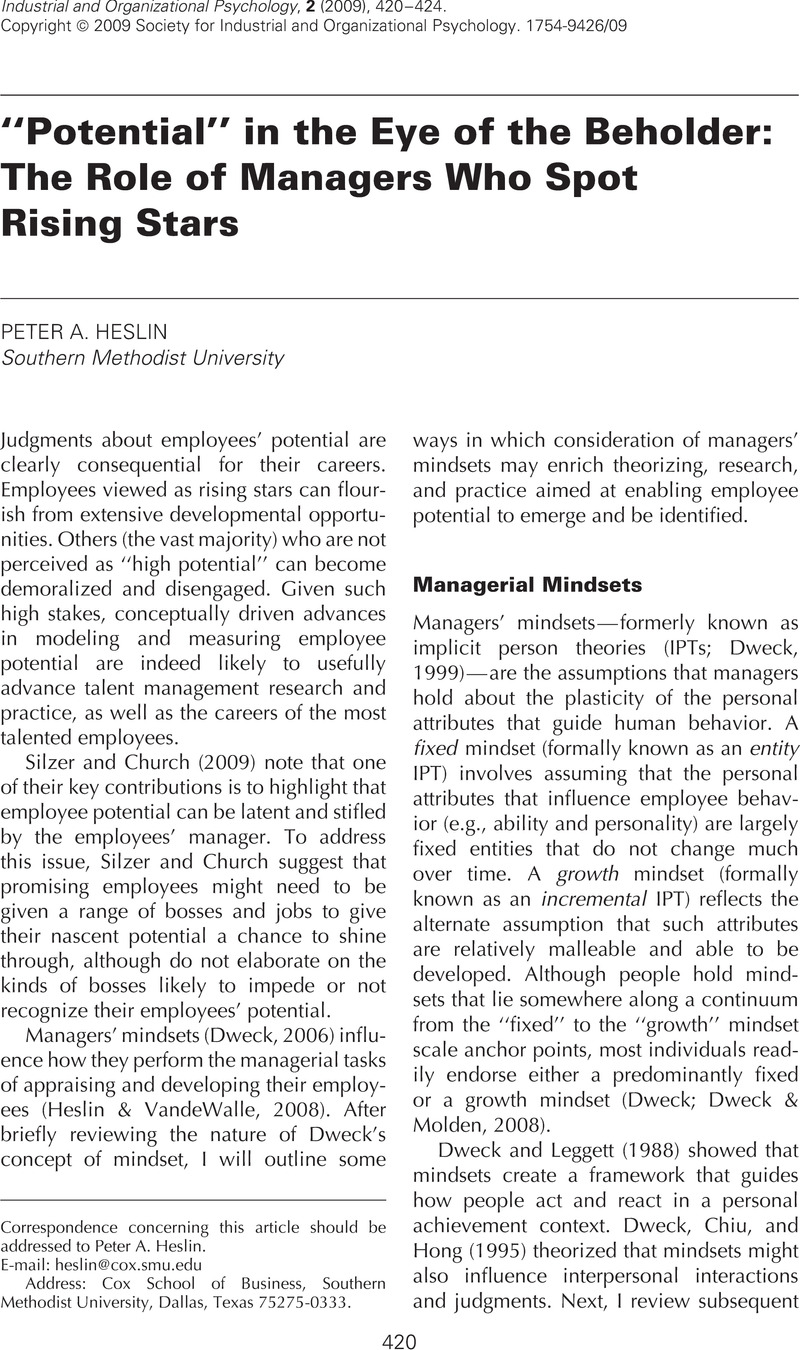Crossref Citations
This article has been cited by the following publications. This list is generated based on data provided by Crossref.
Dominick, Peter G.
Squires, Paul
and
Cervone, Daniel
2010.
Back to Persons: On Social-Cognitive Processes and Products of Leadership Development Experiences.
Industrial and Organizational Psychology,
Vol. 3,
Issue. 1,
p.
33.
Finkelstein, Lisa M.
Costanza, David P.
and
Goodwin, Gerald F.
2018.
Do your high potentials have potential? The impact of individual differences and designation on leader success.
Personnel Psychology,
Vol. 71,
Issue. 1,
p.
3.
Griffith, Jennifer A.
Baur, John E.
and
Buckley, M. Ronald
2019.
Creating comprehensive leadership pipelines: Applying the real options approach to organizational leadership development.
Human Resource Management Review,
Vol. 29,
Issue. 3,
p.
305.
Tresh, Fatima
Steeden, Ben
Randsley de Moura, Georgina
Leite, Ana C.
Swift, Hannah J.
and
Player, Abigail
2019.
Endorsing and Reinforcing Gender and Age Stereotypes: The Negative Effect on Self-Rated Leadership Potential for Women and Older Workers.
Frontiers in Psychology,
Vol. 10,
Issue. ,
Heslin, Peter A.
Keating, Lauren A.
and
Ashford, Susan J.
2020.
How being in learning mode may enable a sustainable career across the lifespan.
Journal of Vocational Behavior,
Vol. 117,
Issue. ,
p.
103324.
Blanco, María Rita
and
Golik, Mariela N.
2021.
Mind the gap: line managers as effective or non‐effective talent spotters.
International Journal of Training and Development,
Vol. 25,
Issue. 1,
p.
23.
Keating, Lauren A
and
Heslin, Peter A
2022.
A Lay Theory Perspective on Age-Based Stereotyping.
Work, Aging and Retirement,
Vol. 8,
Issue. 4,
p.
375.
Wingen, Sophia
Graczyk, Thomas
Wingen, Tobias
and
Dohle, Simone
2024.
Mindsets at Work: Understanding the Positive Impact of Growth Mindsets on Workplace Coaching.
Basic and Applied Social Psychology,
Vol. 46,
Issue. 5,
p.
381.
Ragins, Belle Rose
Hu, Changya
Wang, Sheng
and
Huang, Jui-Chieh
2024.
Give it your all or hardly give? The role of mentors' beliefs about protégé advancement potential and gender in mentoring relationships.
Journal of Vocational Behavior,
Vol. 155,
Issue. ,
p.
104062.



